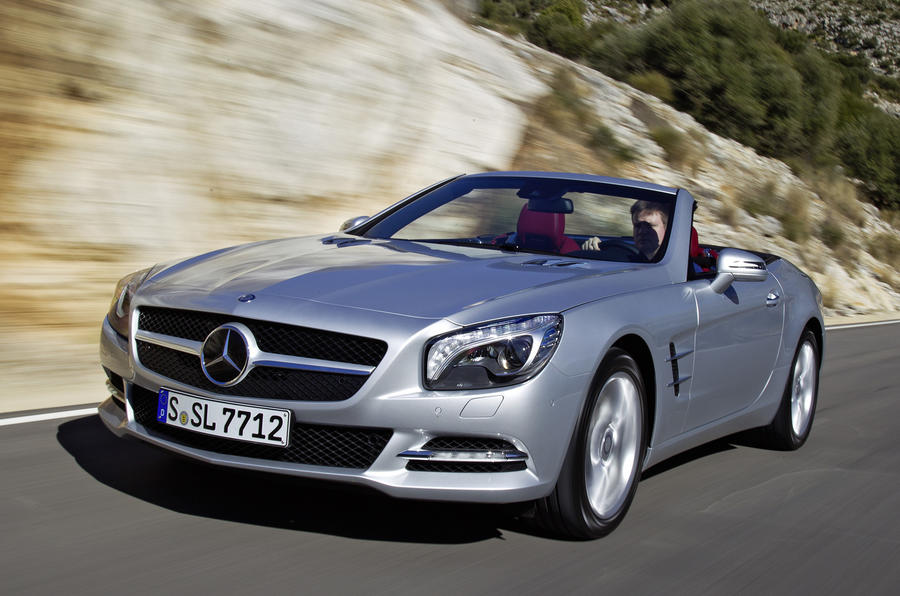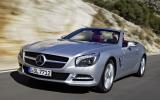What is it?
The sixth installment in one of Mercedes’ best known and most desired model lineages: this is the new SL. It promises to scale new heights in terms of performance and efficiency, refinement and dynamism – but moreover, to offer an even more convincing blend of the intoxicating luxury and open air sporting thrill for which Mercedes’ grand convertible has become so widely revered.
The ‘R231’ is a massive undertaking for Mercedes – the firm’s first series-production model to be made almost exclusively from aluminium. The SL’s sophisticated body-in-white superstructure mixes die cast-, chill cast-, stamped- and extruded aluminium with a little magnesium and ultra-high strength steel. A lighter all-magnesium folding hard-top roof and mostly aluminium body panels contribute, in turn, to an overall kerbweight saving of up to 140kg, old car to new. More importantly, the new underbody has increased the car’s torsional stiffness (absolutely critical for delivering good dynamic performance in a convertible) by more than 20 per cent.
Two versions of the SL will be available in the UK this July, but the 4.7-litre twin-turbocharged V8 in the ‘500’ represents the biggest step forward in both performance and efficiency. With 429bhp and a huge 516lb ft of torque, it catapults the SL to 62mph in just 4.6sec – as fast as the last SL 63 AMG. It’s also capable of 31mpg on the combined cycle.
Suspension, like that of the last car, is all-independent, by multi-links at both ends. Steel springs with adaptive dampers are standard on both the V6 SL 350 and the SL 500; Mercedes’ air-sprung Active Body Control chassis is optional on both cars, but standard on the range-topping new SL 63 AMG, which arrives in the autumn.
And the cabin? That remains a strict two-seater. Need occasional back seats? Then you’re not SL people; feel free to shop elsewhere. It’s an arrogant and unusual stance, but one this opulent roadster nonchalantly backs up.
What’s it like?
On top of the all-new underbody, the SL’s basic concept and proportions are carried over. The car is long of bonnet, short of cabin, with the same slightly unwieldy looking bustle back-end, the dimensions of which are necessary to package the car’s metal roof when folded.
In truth, the styling of the new car barely does justice to Mercedes’ investment in it. The new grille and headlights freshen the car, and the cleaner interpretation of the bodyside is welcome, bringing with it a pleasing nod to the gorgeous 1960s ‘Pagoda’ SL. But considered as a whole, the new SL seems plain; next to the SLK and SLS, like just another drop-top clone. It deserves better.
Thankfully, the car has lost none of its glorious distinctiveness from behind the wheel. You feel fortunate just to be on board. The cabin’s even wider than it used to be, so you sit at a very discreet distance from your passenger, surrounded on all sides by plush leathers, cool metal trim and attractive, aero-inspired instruments.
Thus ensconced, thumb the silver starter button. The V8 engine in the SL 500 catches with a muffled roar. It’s nearly silent at idle, a little more audible at urban speeds, and only really raises its voice when you flex the long-travel, floor-mounted accelerator – and only then in the most suave and cultured tones.





















Join the debate
Add your comment
Re: Mercedes-Benz SL500 BlueEfficiency
Have to say it looks nice but a bit dull.
Re: Mercedes-Benz SL500 BlueEfficiency
"Need occasional back seats? Then you’re not SL people; feel free to shop elsewhere"
And yet those people *were* SL people in several previous generations of the car.
With the much smaller SLK also in the M-B range as a strict two seater convertible, restricting this much larger car to two seats only, despite the popularity of the occasional rear seats in previous SL models, seems perverse.
Re: Mercedes-Benz SL500 BlueEfficiency
Nice car.
Shame they painted it brown.
Why are some of the companies using brown cars.
Brown cars are wrong